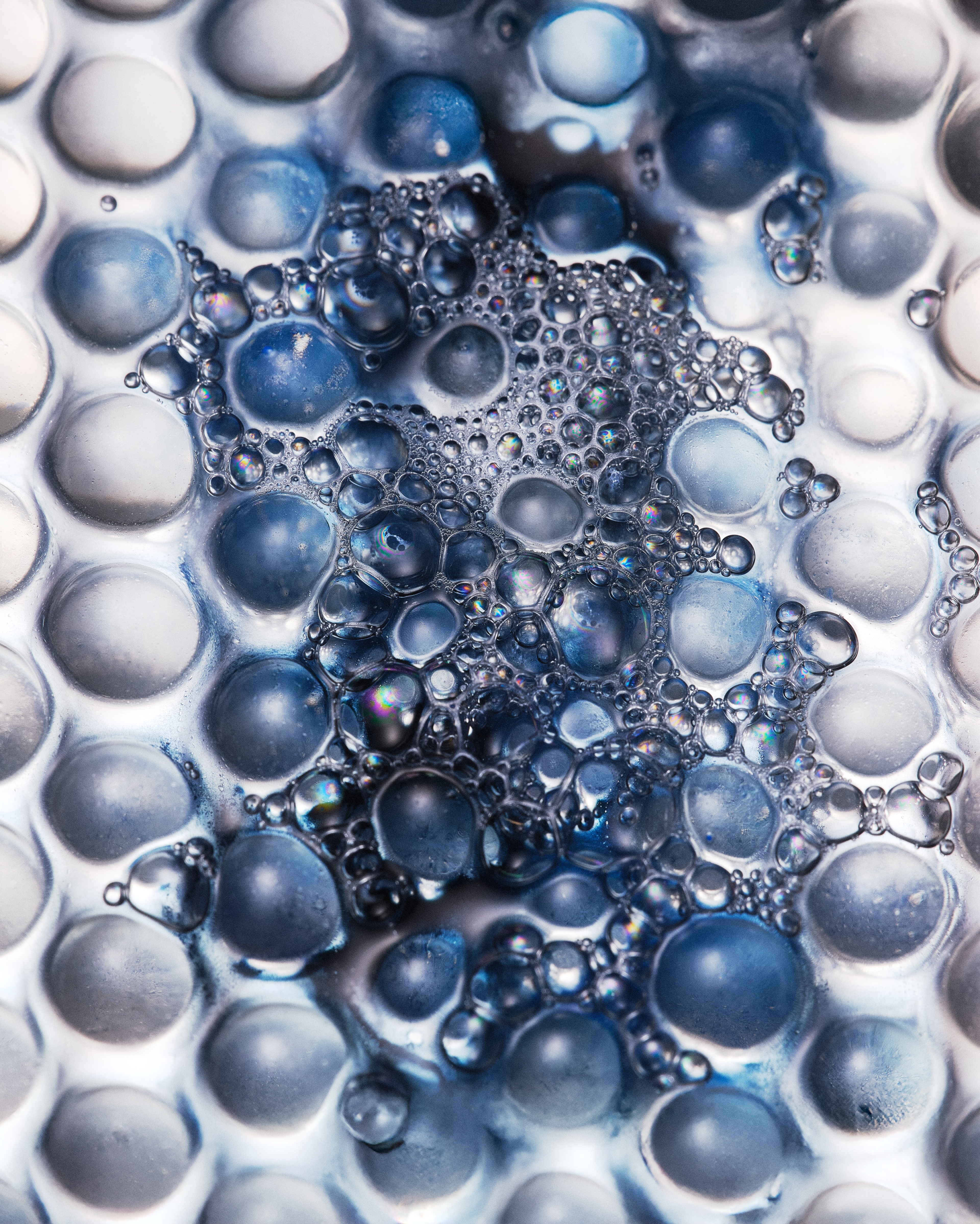Noise
FUTURE THREADS
FUTURE THREADS
Words: 1488
Estimated reading time: 8M
The fashion industry has a sustainability problem. These next-gen innovators might offer the solution.
By Beyond Noise
The hard truth is that—even after so many initiatives, press statements, pared-down ads, and fresh faces—fashion remains one of the Earth’s most damaging industries. To make progress toward lofty sustainability goals, labels have to drastically change their ways. One of the most promising methods? Finding a way to produce with next-gen materials, at scale.
At its core, fashion is antithetical to climate responsibility. Green fashion is passé, or at best, as relevant as any other fleeting microtrend. More elemental is the impulse to splurge: because it’s a special occasion, because all elegant women do, because you’re worth it. The lifeblood of the industry isn’t style (unbuyable) or need. (Enough clothes exist to serve six generations, and most garments only get worn a few times.) It’s the thrill of reckless abandon. Should I just get it? What’s the harm? A staid respect for the Earth is not top-of-mind in these moments. Catch me not shopping for the good of the Earth.
A less rapacious society is possible—but that future doesn’t include the fashion industry as we know it. After buying nothing, the best we can do is buy nothing new. The secondhand market has exploded, but it still only accounts for nine percent of global apparel revenue. Plus, a thriving secondhand market doesn’t mean fewer products (evidenced by all the fast fashion for sale at thrift stores). The industry’s emissions are expected to double by 2030—the same year demand for next-gen textiles will outpace supply. The frontier for these materials is not just scientific or ideological—it’s economic.
Today, I saw a faux fur coat with a faux mink’s head, legs draped over the lapel. In the last decade, genuine fur sales have plummeted, while vegan alternatives have more than doubled. In 2022, Kering Group (Balenciaga, Gucci, Bottega Venetta, Yves Saint Laurent) banned its use company-wide. Then, Vogue declared it back, and the stigma somewhat lifted. As fur comes back to the table, supply looks different. Widespread faux options still do well, because they cost less and feel real. But while it wouldn’t kill a mink, it might take a millennium to decompose. Such is the nature of progress in the fashion industry. It’s slow to innovate—always looking for more instead of better. Sustainable solutions must be as unyielding as market logic.
Textile manufacturing is responsible for around 80 percent of fashion’s emissions. Brands have little control of these processes, as the sector is composed mostly of independent contractors. Because of its fragmented, specialized, and interdependent structure, it’s remained largely unchanged since the mid 20th century, presenting a massive opportunity for next-gen materials to answer the call.
How might we define what’s truly next-gen? Innovative, often bio-based, sometimes regenerative substitutes for wasteful or polluting conventional materials. A few companies are at the forefront of the field, detailed below.
Keel Labs, founded by Tessa Callaghan and Aleks Gosiewski as design students, developed Kelsun, a fiber made from seaweed-derived biopolymers. Because their process begins in the ocean, instead of on arable land, they bypass the need for pesticides and synthetic fertilizers, working with nature instead of on top of it. UPPEAL is a leather alternative put in use by Stella McCartney, a label that’s never used leather, fur, or exotic skins since its founding in the early-aughts. UPPEAL is not only cruelty-free, but good for the environment, working with apple waste in the juice and jam industry of Northern Italy.
Another example is the London-based Post Carbon Lab, which manufactures carbon-negative textile coatings via photosynthesis. Founders Dian-Jen Lin and Hannes Hulstaert dye existing fabrics with naturally-occurring microorganisms, sustainably coloring and actually absorbing carbon dioxide in the process. Ponda, the biomaterials company responsible for BioPuff, engineers a goose down alternative from cattails and other plantlife found in English wetlands—rehabilitating some of the oldest and most healing environments on our planet as they go.
There’s also Rubi Labs, founded by twins Neeka and Leilah Mashouf in San Leandro, California. They generate textiles that are molecularly identical to conventional ones, while reducing land and water use, converting CO2 into the pure cellulose relied on in traditional manufacturing. “One of our main focuses has been to make materials that plug back into the carbon cycle,” says Neeka. By avoiding waste, Rubi’s process is more than cyclical—it’s actively regenerative, on the road to becoming a highly cost-effective choice.
Forager uses seed hulls to grow mycelium in vertical farms, which functions, ultimately, as leather. Just as mushrooms decompose tree stumps on the forest floor, they devour agricultural waste. This was the concept behind their AirMycelium platform, which efficiently grows sustainable textiles in a matter of days. These “hides” are completely biodegradable and compostable once discarded.
Another way next-gen innovators broaden their impact is by diversifying material applications. Spiber, founded by Kazuhide Sekiyama, was inspired by spider silk, which is elastic enough to slow prey; if it were scaled to the width of a pencil, it could stop a fully-loaded Boeing 747 from taking off. Its base product, Brewed Protein, doesn’t actually involve spiders at all. (The species’ penchant for cannibalism poses a challenge to mass production.) In Spiber’s process, genetically-modified microorganisms are fermented, turning sugar into protein, which is ground into powder and spun into a silk substitute, as well as alternatives to cashmere, wool, and fur.
The usual trajectory for next-gen innovators begins with small, high-end brand collaborations. This is where a lot of them get stuck. Last year, Swedish textile-recycling company Renewcell—an industry beacon of hope—went bankrupt. Other leaders similarly backslid. It bodes poorly for smaller start-ups in their wake, all of whom compete for resources and stakeholder trust. The need and the solutions exist; the onus is on brands to bridge the gap.
As these companies scale, they have the potential to change the way the fashion industry operates. Neeka is hopeful: “I think innovators have the unique potential to shift things [along the supply chain] by demanding, let’s say, a manufacturing code of conduct—addressing working conditions, wages, and renewable energy.”
Research shows that an infinitesimal increase in clothing prices could ensure living wages for all fashion supply chain workers. Perhaps the industry could meet its sustainability goals by prioritizing the rights of those who breathe life into the clothes, given how much restructuring would inevitably follow. By the same logic, cost-efficient next-gen manufacturing could change the face of the supply chain, forcing a renegotiation of power and responsibility.
Next-gen textiles can and must move the needle on issues both within and outside of the fashion world. These are flexible and efficient solutions to an antiquated system. Fashion will continue to sell dreams and stories, and consumers will always want what’s new and what’s next. But nature offers its own ethos: The material problem is the material solution.


PHOTOGRAPHY + ANIMATION
SAM HOFMAN
SET DESIGN
Sophie Iona
Beyond Noise 2025
PHOTOGRAPHY + ANIMATION
SAM HOFMAN
SET DESIGN
Sophie Iona
Beyond Noise 2025
